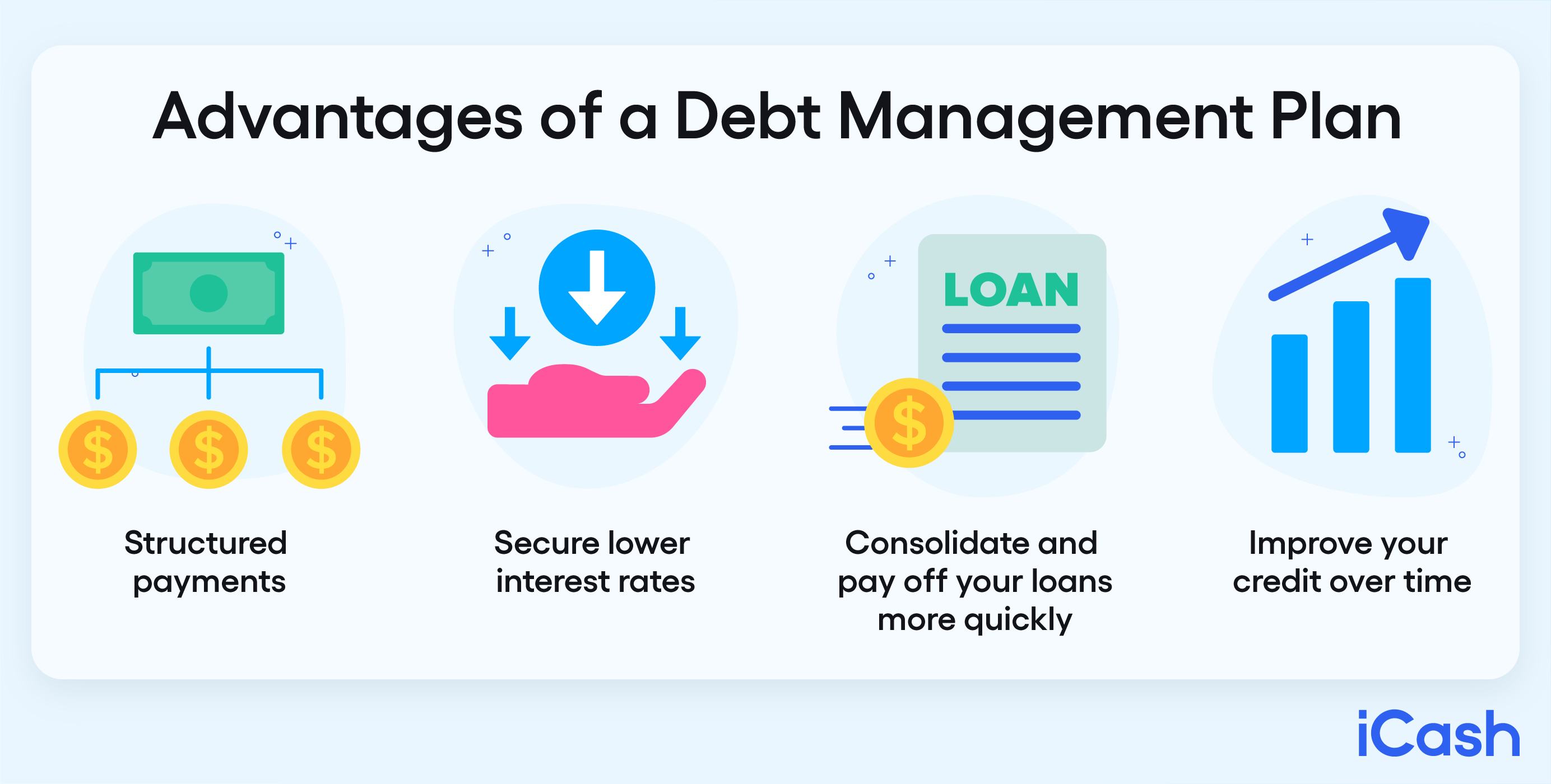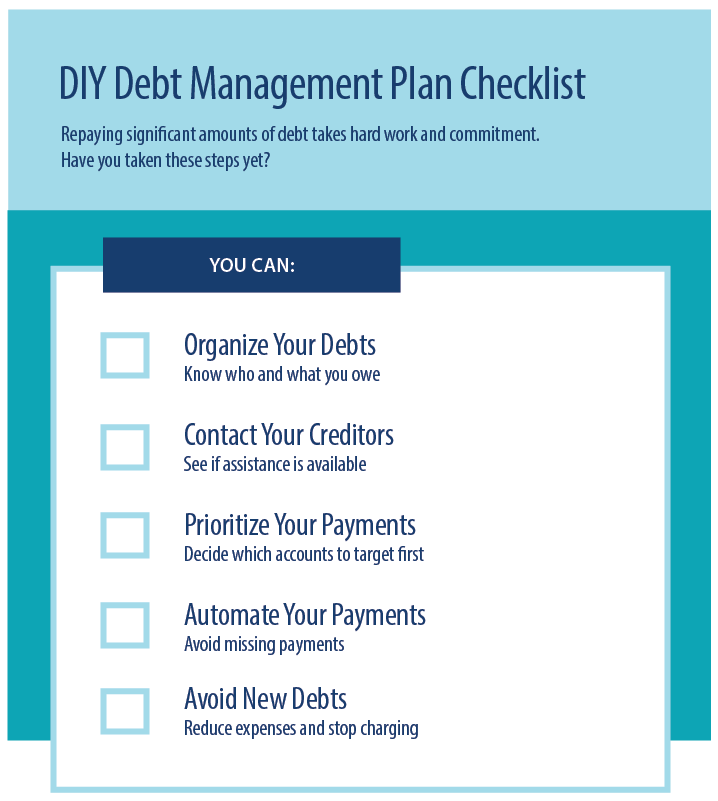Comprehending the Refine of Financial Obligation Combination: More Discussion Posted Here
Comprehending the Refine of Financial Obligation Combination: More Discussion Posted Here
Blog Article
Everything You Need to Find Out About Creating a Tailored Debt Management Plan
In the world of personal finance, designing a customized financial obligation administration strategy is typically the foundation of achieving monetary stability and peace of mind. As you browse the complexities of developing an individualized debt monitoring strategy, comprehending the complexities of each step is key to your economic success.
Examining Your Current Financial Obligation Situation
One must first perform a detailed assessment of their existing debt responsibilities prior to developing a reliable debt administration strategy. Analyzing your present financial debt situation is an important primary step in getting control of your finances. Begin by gathering all needed financial papers, such as charge card declarations, lending contracts, and any kind of outstanding expenses. Develop a thorough list of each debt, including the total amount owed, rates of interest, minimal month-to-month settlements, and due dates. This extensive introduction will certainly provide a clear photo of your economic standing and aid focus on which financial debts to resolve initially.
After compiling this information, determine your total debt-to-income proportion by dividing your month-to-month debt repayments by your month-to-month earnings. Comprehending these aspects of your financial scenario will certainly lead you in creating a tailored debt monitoring plan customized to your specific requirements and objectives.
Setting Financial Goals and Targets

When establishing monetary goals, it is necessary to be particular, measurable, attainable, appropriate, and time-bound (WISE) For example, you could set a goal to settle a certain quantity of debt within a details amount of time, such as minimizing your bank card equilibrium by $5,000 in the next year - More Discussion Posted Here. By establishing clear targets like this, you can track your progression and stay motivated to attain your financial obligation monitoring objectives
In addition, take into consideration prioritizing your financial obligations based upon factors such as rate of interest, exceptional equilibriums, and payment terms. By concentrating on high-interest financial debts initially, you can conserve cash in the future and accelerate your trip towards financial flexibility. Remember, each individual's financial situation is distinct, so customize your objectives and targets to fit your private requirements and conditions.
Creating a Realistic Budget
Crafting a distinct spending plan is a fundamental action in effective financial debt management and monetary planning. A practical budget serves as a roadmap for your monetary wellness, assisting you track your revenue, expenses, and financial debt payments. To produce a sensible budget, begin by listing all your resources of revenue. This includes your salary, side hustle incomes, or any various other financial inflows. Next off, brochure all your taken care of expenses such as rent or home loan, energies, insurance, and financing payments. Variable expenses like groceries, enjoyment, and transport must likewise be included. Separate between wants and needs to prioritize necessary costs and determine locations where you can reduce back.
Regularly review and change your budget as needed to stay on track with your financial objectives and debt payment strategy. By sticking to a practical budget, you can efficiently handle your debt and work in the direction of a much more safe and secure monetary future.
Exploring Debt Repayment Strategies
After establishing a sensible budget, the next critical step in effective debt administration is to explore numerous debt settlement approaches. One usual strategy is the snowball technique, where you concentrate on paying off the tiniest financial debts initially while making minimum payments on bigger debts. This approach can aid build energy as you see smaller sized debts being gotten rid of, providing motivation to tackle bigger ones.
Another technique is the avalanche method, which entails focusing on financial debts with the highest possible rate of interest. By targeting high-interest financial debts initially, you can reduce the general quantity you pay in rate of interest over time. This method might be much more affordable in the lengthy run, although it could take longer to see private financial debts completely repaid.
Financial debt debt consolidation is an additional alternative where you integrate several debts into a solitary car loan with a lower passion price. This can streamline your repayment procedure and potentially lower the overall passion paid. Nevertheless, it's important to very carefully take into consideration the terms and fees connected with debt consolidation to ensure it's the ideal choice for your economic situation.
Tracking and Readjusting Your Plan

Readjusting your plan might include reallocating funds to take on high-interest financial obligations initially, working out with financial institutions for lower rate of interest or better payment terms, or discovering extra earnings resources to expedite financial obligation repayment. As your monetary scenario advances, your financial debt monitoring plan ought to adjust accordingly to continue to be reliable. By staying proactive and versatile in surveillance and readjusting your strategy, you can maximize your efforts towards paying off your financial obligations efficiently and achieving your financial objectives.
Conclusion
To conclude, developing a customized debt management plan involves assessing existing financial obligation, establishing monetary objectives, creating a reasonable budget plan, exploring repayment strategies, and surveillance and changing the strategy as required. By following these actions, individuals can take control of their financial scenario and work in the direction of coming to be debt-free. It is very important to remain self-displined and dedicated to the plan in order to attain lasting economic security.
One should first perform a complete analysis of their present financial obligation obligations before creating navigate here an efficient financial debt administration strategy.After establishing a practical budget plan, the following important step in efficient financial debt management is to discover various financial obligation payment techniques - More Discussion Posted Here.To properly manage your financial obligation, continual surveillance and adjustment of your financial obligation monitoring plan are necessary components for long-lasting economic security.Changing your strategy might involve reallocating funds to tackle high-interest financial debts first, working out with financial institutions for lower rate of interest prices or better repayment terms, or checking out added income sources to expedite financial debt payment.In verdict, developing an individualized financial debt management plan includes examining existing financial debt, establishing economic objectives, developing a practical spending plan, discovering payment techniques, and tracking and changing the plan as needed
Report this page